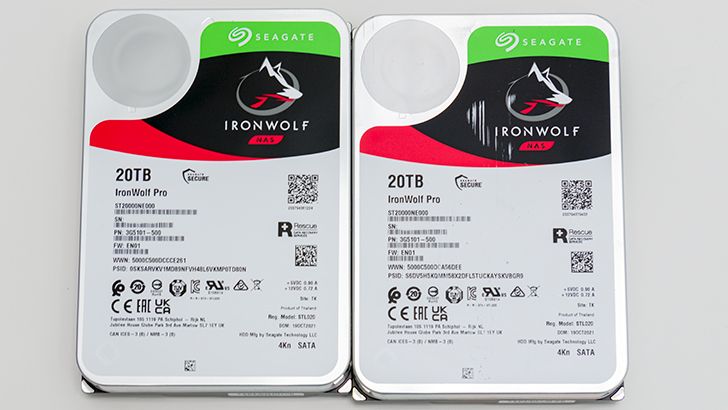This generational increase in heat and power consumption is why the industry is already trying to move away from the ‘M.2’ standard and more towards the (up to now) enterprise oriented EDSFF (“Enterprise and Data Center SSD Form Factor”) E1.xx standard. Albeit via just quietly “refreshing” the M.2 standard to match the E1.S standard. For example, the E1.S allows for 111.49mm length, 38.4mm width and either 9.5 or 18mm thickness. It also calls for heatsinks as part of the standard, and ups the max power consumption to 25 or even 40 watts. Compare that to the 2020 additions to the M.2 standard, which was upgraded to allow for 110mm length, 30mm width, and ~10mm z-heights. All that is missing is the 25 watts TDP… which is right in line with what Phison estimates PCIe 6.0 SSDs will consume. In other words, while we personally would prefer E1.S to go mainstream…we may finally get our wish and end up with an “M.2” standard that, beyond the name, has nothing in common with what was originally designed for Next Unit of Computing (NUC) micro-PCs!

In the meantime, this heat and power consumption is why Crucial has opted for two variants of the T700. A nekkid model meant to be used with (either) a motherboard’s integrated heatsinks (or 3rd party heatsinks), and one that comes with a rather beefy OEM heatsink that combines a nickel-plated copper base with a ~16mm tall aluminum heat fin stack (the above photo is total height over the PCB and includes the ~1.3mm for NAND and controller).

As you can see this OEM heatsink may not be anywhere close to being as beefy a boi as say a Acidalie aftermarket heatsink (nearly 10mm z-height difference!) but it is noticeably larger than the last generation’s low profile heatsink. In testing, the T700 heatsink edition did keep the T700 from thermal limiting in typical and even above average workloads. However, when pushed hard for extended periods of time it will thermal limit long before a T700 equipped with an Acidalie or Thermalright HR-09 pro heatsink will. Given the fact that a HR-09 costs about $15 USD enthusiasts may be better served by the denude version and opting for a(n even) large(r) aftermarket cooling solution.

Before moving on a few things do need to be pointed out. This is a dual sided M.2 device. So if one is planning on using it with a motherboard equipped with only a single sided heatsink… one should think long and hard about removing the motherboards heatsink and either using OEM heatsink model, or opting for a third party option with the denude model. Doing otherwise will result in half the NAND being on its own for cooling. Yes, Crucial does include a copper layer hidden in their labels but that is not good enough. PCIe 5.0 drives need cooling solutions that cover both sides of the PCB as they are pushing their NAND hard and fast. Especially this NAND which does have a tendnacy to run hotter than its RG 2.0 predecessor.

It is also worth noting that, like most if not all PCIe 5.0 SSDs, the OEM heatsink variant of the T700 uses the newer M.2 2580 standard not the older 2280 standard. What this means is that this ~23mm wide NVMe SSD may not fit in all motherboards M.2 ports. Especially boards where the M.2 slots are packed in as close as possible to one another, or the M.2 port is packed in tight to something important like a PCIe slot (e.g. on m-ITX boards) or motherboard VRM heatsink(s). Thankfully, most (sane) motherboards that boast of having a PCIe 5.0 slot do follow the 25mm (and even 30mm) guidelines set out long before PCIe 5.0 M.2 drives were available. Just be aware that not all motherboards followed the new standard. Some just copied and pasted over their previous M.2 2280 template and simply update the power delivery and connectivity to accommodate next-gen PCIe 5.0 SSDs.

Further making things a touch more complicated is both the OEM heatsink version and third party heatsink equipped models may, or may not, play nice with motherboards that do come with heatsinks for both sides of the M.2 drive. For instance, our Gigabyte Aorus Z690 comes with dual sided heatsinks but if one does not first remove the heat pad from the bottom half of the motherboards heatsink the T700 will not lock in place without placing undue stress on the M.2 port. Do. Not. Force. It. Down. Instead, remove the heat pad and use a smear of non-conductive TIM on the metal plate before installing the heatsink equipped T700. This will promote better heat transfer than removing the backplate and generally speaking will give you the best of both worlds: excellent thermal mass for both sides of the M.2 drive and excellent surface area for passive cooling – something most motherboards M.2 heatsink typically lack. Just be aware that not all motherboards allow easy removal of their M.2 backplate / heatsink. So this ‘trick’ may or may not work on your motherboard. We have done it on multiple boards from multiple companies, but there is always a first time.

On the positive side, while the OEM heatsink variant will not fit underneath a GPU… it is noticeably lower profile than ones that are going to be noticeably better than it at cooling. For example, the Acidalie is downright massive in comparison and one has to be careful when choosing the components that play nice with it. So please do not opt for the denude version before thinking about the rest of the parts you plan on using in your build – especially CPU cooler and motherboard.









